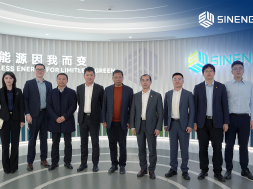
Solar additions drive record low electricity prices in South Australia
South Australia saw record low daytime energy prices in the first three months of this year, driven by a sharp uptake in renewable power resources, including rooftop solar.
That’s according to the Australian Energy Market Operator’s (AEMO) latest quarterly report, which said that mild summer temperatures and record Q1 installations of rooftop solar capacity led to a 3% fall in average operational demand from the National Electricity Market (NEM) at the start of 2021.
The report also found wholesale electricity prices falls up to 68% during the same period, reducing South Australia’s average quarterly electricity price by AU$10/MWh (US$7.75/MWh).
Violette Mouchaileh, AEMO’s chief markets officer, said the last quarter saw less price volatility than previous years and more volume of low-priced coal and hydro generation, as well as a 29% per cent increase in wind and solar generation “all contributing to lower wholesale prices.”
South Australia’s average daytime prices fell below zero consistently between 10am and 3:30pm (AEST) during the quarter, averaging at -AU$12/MWh for the first time in NEM’s history, Mouchaileh said.
The report noted that the drop marked the first quarter “anywhere in the NEM” that the average daytime price had fallen below zero “on a consistent basis”.
Victoria saw the largest spot price reductions, the report found, falling from $79/MWh to just $25/MWh, its lowest quarterly rate in nine years. Prices in New South Wales also fell from AU$86/MWh to $38/MWh, while Queensland’s quarterly average reached UA$43/MWh.
South Australia has become a hotspot of renewable energy deployment, particularly solar, over the past year. Australia’s PV boom and changes in energy use last year drove electricity demand to record lows.
AEMO’s Q3 2020 report found that distributed PV met 71% of South Australia’s total energy needs on 13 September, driving a new daytime minimum demand record of 379MW. And in the latest quarter, combined wind and solar provided 786 MW of the increase in low-priced offers, according to AEMO. This, it said, was “primarily driven by new capacity additions and ramping up existing capacity”.
The first three months of the year, the report said, saw increased periods of “very high Victorian and South Australia [variable renewable energy] output”, driven by more capacity installed in Victoria. As a result in Q1 this year, Victoria and South Australia’s collective renewables output was above 2.5GW 11% of the time, compared to 4% in Q1 the previous year.
However, this has in-turn placed more pressure on gas-powered generation systems to provide grid stability. Mouchaileh noted that negative electricity prices between January and March “required AEMO to direct South Australian gas-powered generations on for system security for a record 70 per cent of the quarter.”
However, developers are also increasingly looking to add more battery energy storage systems (BESS) to the region’s grid to provide low-emissions stability. Last September, independent power producer Neoen trebled the capacity of its Hornsdale utility-scale battery in South Australia, an upgrade the company said will reduce the risks of blackouts.
















